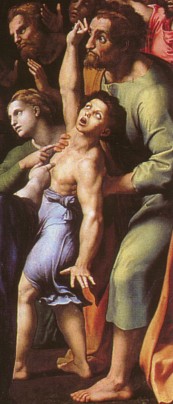|
Vatican Museums, Rome 
German Epilepsy Museum Kork www.epilepsiemuseum.de |
According to present estimations, there are between 300.000 and 600.000 people in the U.K. who have epilepsy. Of these, over half are under 20 years of age. In the Renaissance, this disease was just as common as it is today, although in those days people made no clear distinction between obsessions, the plague and epilepsy. The Renaissance viewed the human being who fitted harmoniously into the cosmos, as the measure of all things. Therefore people reacted with great irritation to anything that seemed unusual or strange and looked to the heavens to find an explanation for it. In the Christian Middle Ages, as in ancient Greek and Roman times, epilepsy was regarded as the "unnatural, mysterious illness which is not of this world." |




